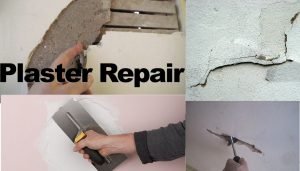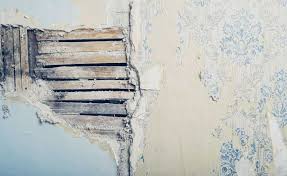Repairing Plaster walls by 5 step
In the old House, general repairing plaster walls will do into simples steps.

Old ceilings and plaster walls are made from two layers of plaster. The brown coat is applied over wood lath strips nailed to the studs and spaced about 0.25 inches apart to create keyways for the brown coat to grip.
The finish (last coat) coat is applied after the brown coat has hardened. The integrity of a plaster surface depends on the bond between its wood lath and plaster. When the bond breaks and the plaster cracks.
The key to any fix is to reunite the plaster with the strips of wood lath below. Otherwise, the comeback cracks, no matter how many times you patch over them. That’s why This Old House contractor Muhammad Suleman usually reattached lath with metal washers and screws before attempting maintenance.
He recently tried Big Wally’s Plaster Magic, a homeowner-close friendly adhesive that uses glue instead of screws. While it costs more than the washer and screw method, a six-tube kit runs 18840 Rs versus 3140 Rs for 120 metal washers. The final finishing looks easier and better because there aren’t any washers to cover. Plus, a glued bond lasts longer than a screwed joint.
The Repairing Plaster Walls
Fix Loose or Cracked Plaster
Cracked and Fixing loose plaster is usually quicker, cheaper, and easier than the alternatives of ripping out the hanging new drywall or blue board and old plaster.

Generally, filling a crack with a joint compound is pointless. Because the crack comes back. The key is to fix the failed bond between the plaster and the lath. For years, contractors and homeowners have done just that with metal plaster washers. These are fastened to the lath with drywall screws, pulling the plaster of the wall tight. But the tape and washers protrude from the covering and plaster them with layers of joint compound, and tape requires a fair amount of patience and skill.
Steps of Repairing Plaster Walls
Smooth Damaged Areas With a Scraper
The first in the Repairing Plaster walls step is to prep the area by removing any flaking and loose plaster. Next, use a ball pein hammer and a cold chisel to chip away the damaged plaster and use a scraper to scrape excess debris. Take care not to hit too hard with the hammer as plaster could damage the wood lath behind the plaster.

This process might make the hole big but will give you a clean area to put the new plaster.
Mix New Plaster
Once the surface preparation is ready, mix up only the amount of plaster necessary for the repair. Follow the instructions on the packaging to ensure the proper compound. Mix plaster to the consistency of cake frosting.

Apply the Plaster Mix to the Damaged Area
Apply the mixture with the 10″ wallboard knife and spread a 1/4″-inch layer over the hole. Cross-scratch the first coat as it begins to set to allow the second coat to adhere well.
If needed, apply plaster and drywall tape to the wall to fill in larger, bumpy areas. First, apply a joint compound or a thin layer of plaster and then apply the tape. Next, apply more joint compound or plaster mixture over the tape and use the drywall knife (hammer) to smooth the plaster surface until it’s even with the wall, pressing to remove pockets of drywall or plaster air mud from below the tape.

Once the first layer has dried, apply a second layer. Next, apply another 3/8″- to 1/4″-inch layer and cross-scratch as you did the first time. Allow it to dry thoroughly before you continue.
Apply Joint Compound
After the second layer has dried, mix the joint compound according to the manufacturer’s instructions and apply it very thinly using the 10″ wallboard knife. Blend the layer into the wall and allow it to dry.

Sand and Paint
Sand, the area smooth with the sandpaper block, then paint and prime.
We Love Cricket